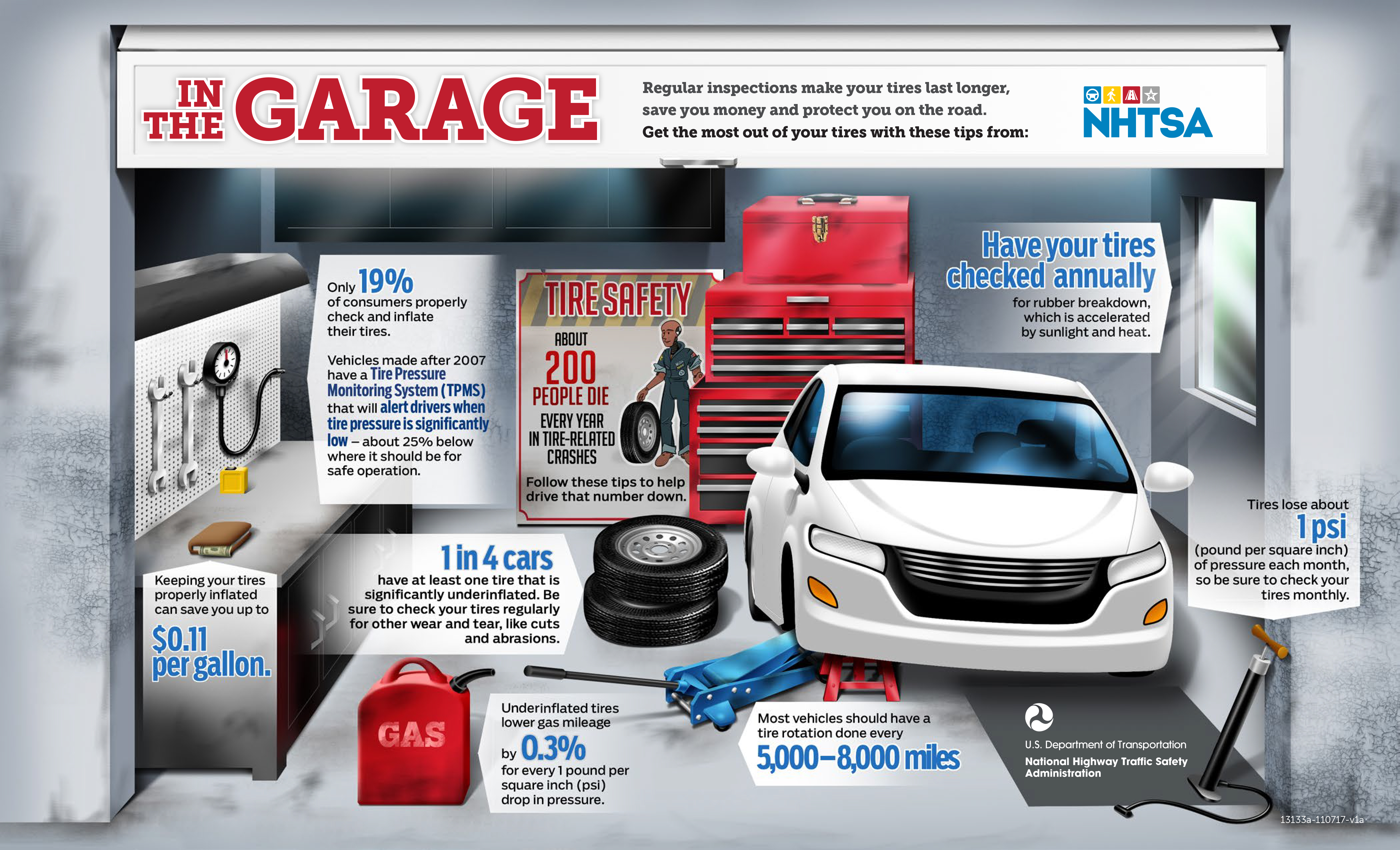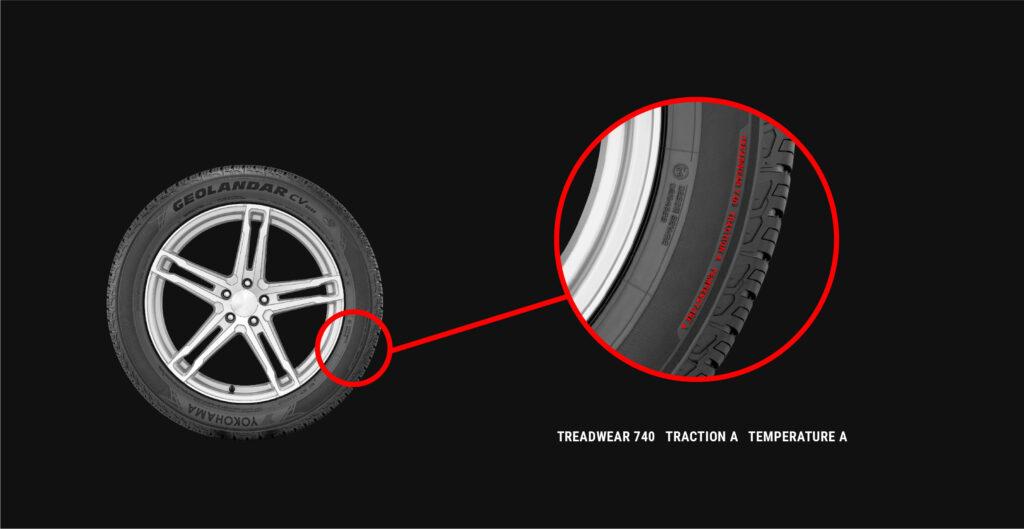There are three main organizations that rate the safety of light truck tires- the National Highway Traffic Safety Administration (NHTSA), the European Union (EU) and Consumer Reports. All three use different methods to test and rate tires, so it is important to understand how each organization rates tire safety.
The NHTSA uses a star rating system to rate the safety of light truck tires.
Tires are given a rating from one to five stars, with five stars being the highest rating. The NHTSA tests tires for treadwear, traction, and temperature resistance. Tires must also meet certain standards for load carrying capacity and speed rating.
The EU uses a similar system to the NHTSA, but instead of stars, they use a scale from A to G, with A being the highest rating. The EU tests for wet grip, fuel efficiency, noise level and rolling resistance in addition to treadwear, traction and temperature resistance.
Tires must also meet certain standards for load carrying capacity and speed rating.
Consumer Reports does not use a star or letter system when rating tire safety. Instead, they simply state whether or not a tire is recommended. Consumer Reports test for treadwear, traction in both dry and wet conditions, as well as temperature resistance .
There are a few things to consider when purchasing light truck tires. First and foremost, you’ll want to make sure the tires you select are rated for safety. The Tire Safety Rating (TSR) is a good indicator of how well a tire will perform in various conditions.
The higher the TSR, the better the tire will be at gripping the road and providing stability.
When it comes to light truck tires, there are three main types: all-season, mud-terrain, and winter. All-season tires are designed for use in both dry and wet weather conditions.
Mud-terrain tires provide excellent traction in off-road conditions, but they can be noisy on paved roads. Winter tires are specifically designed for use in cold weather and snow/ice covered roads.
No matter which type of tire you choose, it’s important to regularly check the tread depth and air pressure levels.
These two factors can have a big impact on safety and performance.
Truck Tire Safety – Shop Hazard Assessment
How are Light Truck Tires Rated?
Tires are a vital part of any vehicle, and there are many different types available to suit different vehicles and purposes. Light truck tires are designed for, as the name suggests, light trucks. These include pickups, SUVs, crossovers, and vans.
They need to be able to carry heavy loads and provide good grip and handling on all road surfaces.
There are three main types of light truck tires: all-season, all-terrain, and winter. All-season tires are the most common type and can be used year-round in all weather conditions.
All-terrain tires have deeper treads for better grip on off-road surfaces like dirt or gravel, but they can also be used on paved roads. Winter tires have special tread patterns and compounds that allow them to maintain traction in snow and ice.
Light truck tires are rated according to load capacity and speed rating.
The load capacity is how much weight the tire can support safely while the speed rating is the maximum speed the tire can travel at without failing. Both ratings are important when choosing the right tire for your vehicle.
When shopping for new light truck tires, it’s important to keep these things in mind:
* Make sure you know your vehicle’s specific requirements – each model has different size requirements based on its axle load rating.
* Consider what kind of driving you’ll be doing most often – if you frequently drive off-road or in bad weather conditions, you’ll need a different type of tire than someone who mostly sticks to highways or city streets.
* Check both the load capacity and speed rating before making a purchase – a higher load capacity doesn’t necessarily mean a higher speed rating (and vice versa).
With so many factors to consider, it’s no wonder people sometimes feel overwhelmed when shopping for new tires! But as long as you know your vehicle’s needs and what kind of driving you’ll be doing most often, you should be able to narrow down your choices pretty easily.
What are E Rated Truck Tires?
E-rated truck tires are designed for heavy duty trucks that frequently haul large loads. They are made of tougher rubber compounds and have stronger steel belts than other tires. E-rated tires can handle more weight and provide better traction and durability than other tires.
What is Tire Load Rating H?
Tire load rating H means that the tire can carry a maximum load of 130 pounds per square inch (PSI). The PSI is a measure of how much pressure the tire can withstand before it starts to deform. A higher PSI rating means that the tire can carry more weight without deforming.
Is Tire Traction A Or B Better?
There are a few factors to consider when it comes to deciding whether tire traction A or B is better. One important factor is the type of terrain you’ll be driving on. If you’ll be driving mostly on paved roads, then tire traction A might be a better choice.
However, if you’ll be driving on unpaved roads or in off-road conditions, then tire traction B might be a better choice. Another factor to consider is the weather conditions you’ll typically be driving in. If you live in an area with lots of snow and ice, then tire traction B might offer better grip and stability.
But if you live in a warmer climate, then tire traction A might perform just fine. Ultimately, it’s up to you to decide which type of tire traction is best for your needs.

Credit: www.nhtsa.gov
Tire Safety Checklist
Tire safety is something that every driver should take seriously. Unfortunately, many people don’t realize the importance of maintaining their tires until it’s too late. By following a simple tire safety checklist, you can help ensure that your tires are always in good condition and ready to hit the road.
1. Check your tire pressure regularly. This is one of the most important things you can do to maintain your tires. Use a reliable gauge to check your pressure at least once a month, and adjust as needed.
Keep in mind that different types of tires require different amounts of pressure, so be sure to consult your owner’s manual or the tire manufacturer for guidance.
2. Inspect your tires for signs of wear and tear on a regular basis. Look for cracks, bald spots, or any other damage that could cause problems down the road.
If you see anything suspicious, have a professional take a closer look as soon as possible.
3. Rotate your tires according to manufacturer recommendations (usually every 5,000 miles or so). This helps ensure even wear and tear over time, which extends the life of your tires significantly.
4 . Get regular alignments and balance checks . These services help keep your tires in good condition and improve handling/safety while driving .
Be sure to schedule them according to manufacturer recommendations .
5 . Store your spare tire properly .
Many people forget about their spare tire until they need it , but by then it may be too late . Check on it periodically to make sure it’s inflated and ready to go in case of an emergency .
6 . Avoid driving on rough roads whenever possible . Potholes , sharp objects , and other hazards can cause serious damage to your tires .
Tire Safety Presentation
Are you concerned about tire safety? You’re not alone. In fact, according to a recent study by the National Highway Traffic Safety Administration (NHTSA), tire-related crashes account for nearly 11,000 injuries and over 200 deaths each year in the United States.
That’s why the NHTSA is hosting a Tire Safety Presentation on May 22, 2019 at 2:00pm ET. This free webinar will provide detailed information on how to properly maintain your tires and what to do if you experience a tire-related problem while driving.
You’ll learn about the different types of tires and their specific needs, as well as how to inspect your tires regularly for signs of wear and tear.
The presentation will also cover what to do if you get a flat tire or blowout while on the road.
Whether you’re a new driver or an experienced one, this Tire Safety Presentation is sure to provide valuable information that can help keep you safe on the road. Register today and be sure to tune in on May 22nd!
Tire Safety Tips Pdf
Tire safety is important to prevent serious accidents. Here are some tips to help keep you and your family safe:
1. Check your tires regularly for wear and tear, and proper inflation.
2. Never overload your vehicle with people or cargo.
3. Be cautious when driving in wet or icy conditions.
4. Avoid sudden stops and fast turns whenever possible.
5. If you have a flat tire, don’t attempt to drive on it – get it fixed as soon as possible.
Tire Load Ratings
The load rating of a tire is the amount of weight the tire can support. The higher the load rating, the more weight the tire can support. The load rating is important because it helps to determine how much weight your vehicle can carry.
There are different types of loads that a tire can support:
– Single: This is when there is only one person in the vehicle.
– Double: This is when there are two people in the vehicle.
– Triple: This is when there are three people in the vehicle.
– Quadruple: This is when there are four people in the vehicle.
Tire Ratings by Brand
Tire ratings are a great way to compare tires from different brands. If you’re looking for the best tires for your car, it’s important to know how they’re rated. Here’s a breakdown of how tire ratings work, and what you should look for when choosing a brand.
Tire ratings are based on three main criteria: treadwear, traction, and temperature. Treadwear is measured by how long the tire lasts before it needs to be replaced. The higher the treadwear rating, the longer the tire will last.
Traction measures how well the tire grips the road in wet and dry conditions. The higher the traction rating, the better the grip. Temperature measures how well the tire dissipates heat, which is important for safety in high-speed driving.
The higher the temperature rating, the cooler the tire will run.
When choosing a brand of tires, it’s important to consider all three of these criteria. Some brands specialize in one area or another, so you’ll want to choose a brand that offers good performance in all three areas.
You can find detailed information about each brand’s performance on websites like Tire Rack or Consumer Reports. With so many brands available, it can be tough to decide which one is right for you. But with a little research, you can find tires that will provide good performance and lasting wear – no matter what type of driving you do!
Heavy-Duty Truck Tire Ratings
When it comes to heavy-duty trucks, one of the most important factors to consider is the tires. The right tires can make all the difference in terms of performance and safety, so it’s important to choose wisely. There are a few different ways to rate truck tires, and each has its own advantages and disadvantages.
The first way to rate truck tires is by their load rating. This is a measure of how much weight the tire can safely carry, and is expressed in pounds. A higher load rating means that the tire can carry more weight, which is ideal for heavier trucks.
However, load rating alone doesn’t tell you anything about how well the tire will perform on different surfaces or in different weather conditions.
Another way to rate truck tires is by their tread wear rating. This is a measure of how long the tire will last before needing to be replaced, and is expressed in miles.
A higher tread wear rating means that the tire will last longer before wearing out, which can save you money in the long run. However, tread wear ratings don’t take into account other factors like traction or resistance to punctures.
Finally, some truck tires are also rated for their resistance to punctures and cuts.
This is an important consideration if you’ll be driving on rough roads or in areas with sharp objects like nails or glass shards that could potentially puncture your tires. Tires with a high puncture resistance rating will cost more upfront but could save you money (and hassle) in the long run if you do end up getting a flat tire.
Conclusion
In conclusion, it is important to be aware of the different safety ratings for light truck tires. These ratings can help you make an informed decision about which tires are right for your vehicle.

